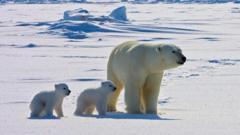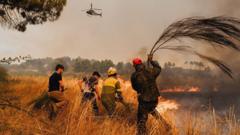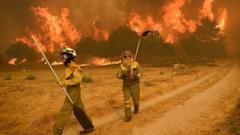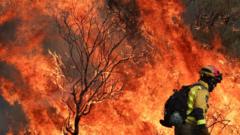As the Arctic continues to warm, a recent study has highlighted a worrying trend: polar bears are facing increased exposure to diseases that they were historically less likely to encounter. Conducted by wildlife biologists, the research analyzed blood samples from polar bears in the Chukchi Sea—located between Alaska and Russia—over a span of three decades.
The analysis compared samples taken during the late 1980s and early 1990s (1987-1994) with those collected nearly 30 years later (2008-2017). The results indicated a significant rise in the presence of pathogens in the bears' blood, suggesting a disturbing connection between climate change, ice loss, and health risks for these iconic animals.
Dr. Karyn Rode, a wildlife biologist with the US Geological Survey, underscored the notable shifts occurring within the Arctic ecosystem. "Our findings indicated that something is changing throughout the entire Arctic," she said. The research focused on six different pathogens, including two parasites linked to toxoplasmosis and neosporosis, as well as two types of bacteria associated with rabbit fever and brucellosis. Additionally, a virus known to cause canine distemper was part of the investigation.
Historically resilient, bears have not typically faced significant health challenges; however, this research highlights the stark reality that environmental changes are impacting their immunity. Dr. Rode noted that the study aligns with increased land use by polar bears as they spend more time on land in search of food due to the diminishing sea ice upon which they rely.
With only about 26,000 polar bears remaining globally—primarily found in Canada—they are classified as vulnerable to extinction by the International Union for Conservation of Nature, with climate change being a primary factor driving their populations down. Polar bears are impressive creatures; they can reach lengths of up to three meters and weigh nearly 600 kilograms, with powerful senses and swimming capabilities.
The research indicates that the risks polar bears are facing may not be isolated but rather indicative of wider ecological changes affecting other Arctic species as well. As these apex predators struggle to find sufficient calories from their prey, the knock-on effects on their health and the health of their environment become increasingly concerning.
The findings from this study were published in the journal PLOS One, highlighting the urgent need for coordinated efforts to mitigate the effects of climate change on these majestic animals and their habitat.



















